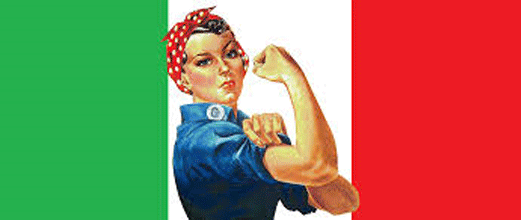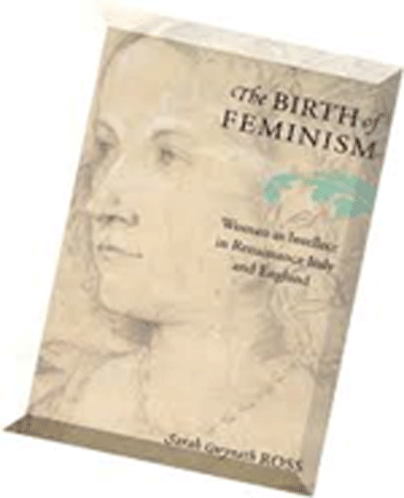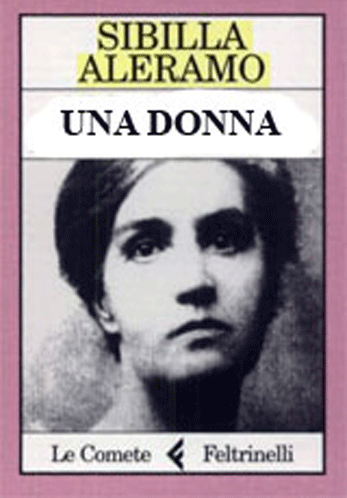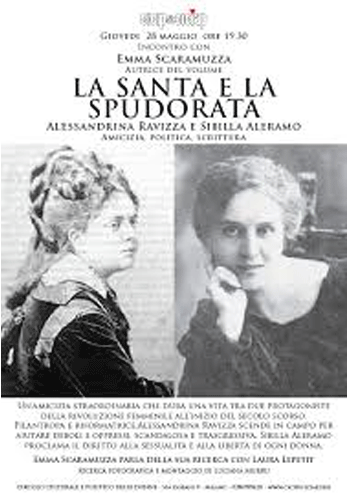![]()
labrys,
études féministes/ estudos feministas
janeiro/ junho 2016 - janvier/juillet 2016
Strength in diversity? An interpretation of Feminism/s in Italy
With Chronology 1250-2016
Piera Carroli
Abstract:
Feminism as a mass movement in Italy reached its peak in the Seventies with the massive demontrations demanding new laws regarding the family and abortion. Throughout the centuries however, there had been instances when women had rebelled against the status quo, and expressed their discontent in writings, orally in folk cultures, and also legally in different parts of the peninsula. Italian feminism has always been characterised by its fragmentation and variety of diverse aims, beliefs and projects, linked also to the social and regional background of the women involved. The diverseness has been, and still is, both a strength and a weakness. It is a strength because local groups can understand and reflect in their aims and platforms the concerns and needs of the women belonging to the district / city / provincial community. At a national level though, it is a weakness, since the many associations populating even remote areas of Italy rarely come together to fight as a united front to achieve common goals, in order to continue to improve women’s condition, social, cultural, economic, epistological. It is crucial that all women, especially the younger generations, become aware of the long history of womens’ struggle made up of lost and won battles, and that it is not over. Knowledge is power. Acceptance and denial instead disempower women across the globe. Feminism is not a dirty word and must continue to prosper. Is is not about “absolute power”, wome are still not equal and do not have equal opportunities in many fields, despite belief to the contrary (Barraclough, 2016), stating that “Feminism doesn’t care about women”. Hence publications such as the present, counteracting the hegemonic discourse proliferating also thank to young women journalists (in Australia), drawing mainly from Pizzey and Shapiro (1982) and her most recent studies on domestic violence, are crucial in the trasmission of knowledge about past and current efforts.[i]
Keywords: Awareness; female condition; parity and diversity; divorce; abortion; emancipation and liberation; self-consciousness; workerism; autonomous feminism; femminicidio; post feminism; immigration; power
L’uguale che non ammette
Differenze non lascia
Spazio alla mediazione
Adriana Cavarero
Introduction
Italian feminism has always distinguished it self from American, British and French feminism, for its non-institutional basis (Bono and Kemp, 1991), its eclecticism and its ability to span distant spheres such as political activism, philosophy, institutions. The different cultures of Italy, geographical, topographic and social, have given rise, from the Sixties onwards to many regional groups, cultural centres and women’s libraries, each carrying out their own agenda and focusing on local issues without losing sight of national of global matters. Although this characteristic of Italian feminism is no doubt positive and activily engaged with area communities, in this article I argue that it is crucial to have a national platform for feminism in Italy to continue to strive for parity at all levels, fight against violence perpetrated on women, including educational, political and burocratic. Such as a national new impetus will ensure that women do not lose what they have gained till now, and will also continue their path towards improved conditions.
However, it is also crucial to maintain contact with women at a popular level in order to carry out pragmatic projects to improve women’s lives while also avoiding becoming isolated in an ivory tower, whether in academia or elitist philosophical circles, although the two are not exclusive. Individual women, groups and associations act out this double role in Italy, linking the theoretical to the practical, as will be outlined in the section on some of the main women’s groups, their interests and work.
The first section, “From voicing awareness to feminism: A century-long trajectory” focuses instead on the documented dawn of female awareness, an awakening transmitted by priviliged medieval and renaissance women in writings lamenting the tyranny of their condition within the family, the institution of marriage, strictly controlled by men, and societal rules; and orally through folk songs, such as lullabies (Carroli, 1993b) or artifacts (Chiavola Birnbaum, 2002, 1993). It attempts to pinpoint some crucial moments, events and figures of the long womens’ development from ancient Mediterranean divinities until Italy’s Unification in 1861.
The second section, from Unification to WW1 begins with women in popular culture and Sibilla Aleramo’s novel, Una donna (1906), defined at the time of publication as the first feminist novel in the world. The novel will be used to highlight a turning point from which There [was] no Turning back (de Céspedes, 1938), despite the following fascist dictatorship and its emphasis on motherhood as the only woman’s role in life.
The third section instead focuses on Women’s participation in World War One and Two to show how women’s awareness, thought, and emancipatory path continued, despite many attempts to hinder it.
While Section 4 The battle for divorce, birth control and abortion traces the major steps in the biggest mass movement protests in Europe, followed by major achievements such as the changes in the Family Law and abortion. The late 1960s and the 1970s changed women’consciousness dramatically. Their political involvement grew to an unprecendented extent, despite their male counterparts often trying to diminish their role. Although there were also conflicts within families like never before, it also meant that sometimes grandmothers and mothers (Bimbi, 1993), who had planted the seeds of rebellion (Carroli, 1993), at times gained the strength to defend their daughters rather than forcing them into a destiny to which the grandmother generation had been forced to adhere.
Section 5 highlight respectively the most original aspects of Italian feminist thought and the main movements, associations and collectives, some still operating in Italy post 2000. Section 6 briefly summarises the main issues still debated in Italy and beyond, relating especially to feminicide, migrations and inequality.
Finally, the concluding section, followed by a bibliography and chronology, will underline that Italian feminism, despite its uneven trajectory, with its stops and starts (hence the word ‘waves’ is unsuitable), is perhaps one of the most enduring and diverse movements in the world, especially in terms of voicing awareness of the injustice surrounding the female condition, locally and universally.
1. From voicing awareness to feminism: A century-long trajectory
Although as a mass movement feminism in Italy was short lived, from 1968-1978, there were traces of what may have been a golden age with mother goddesses in Southern Italy (Chiavola Birnbaum, 1993) and also, further on, expressions of what can be called a feminist awareness of the unfair position of women within the family and in society from the Middle Ages. One clear example is the poem “A la stagione che ‘l mondo foglia e fiora” [In the time when the world leafs and flowers] written by Compiuta Donzella, a woman writer (whose identity is uncertain) in mid 1200:
Lasciar vor[r]ia lo mondo e Dio servire
e dipartirmi d’ogne vanitate,
però che veg[g]io crescere e salire
mat[t]ezza e villania e falsitate,
ed ancor senno e cortesia morire
e lo fin pregio e tutta la bontate:
ond’io marito non vor[r]ia né sire,
né stare al mondo, per mia volontate.
Membrandomi c’ogn’om di mal s’adorna,
di ciaschedun son forte disdegnosa,
e verso Dio la mia persona torna.
Lo padre mio mi fa stare pensosa,
ca di servire a Cristo mi distorna:
non saccio a cui mi vol dar per isposa.
Included in An Anthology of Ancient and Medieval Woman’s Song (Klinck, 2004: 113), the poem explicitly highlights the injustice of having to accept a husband chosen by her father. The injustice is underlined by the contrast between spring, the joyous season when the world puts out leaves and flowers, and love and happiness should also blossom, and her dark state of mind in the face of having to marry a man she does not love. To such a destiny the woman poet prefers a spiritual and lonely life in the cloister. Compiuta Donzella described as the first woman of Italian literature attracted the attention of her more famous male counterparts (e.g., Guittone D’Arezzo). Although she was active for a ten-year period in her native Florence (1260-1270), only three sonnets and a few poems have survived.
Another learned woman who lived in Florence in early1300 was Teodora Dante and was related to Dante Alighieri. She is thought to be one of the first women to conduct research in astronomy and mathematics and may have written some treaties in the subjects. It is also believed that she taught Dante the above disciplines (Carroli, 2013b).
The next well documented figure is Cristina de Pisano who moved to France with her father and was celebrated in the courts. She was one of the most notable woman writer of the late Middle Ages. In her pioneering work about women, “The city of women” (see Chronology), considered one of the first feminist writers in history, “de Pisano profiled leading female figures from history and advanced the idea of gender equality. She continued to espouse the rights of women in Le livre du trésor de la cité des dames (1405). Both of these feminist books were later translated into English” (Christine de Pisan, Biography).
The Republic of Venice in 1500 seemed to offer a more favourable environment to women than Florence. Several writings regarding women, lyrical and in essay form were written by notable figures, such as the renonwed poetsVittoria Colonna, Giulia Bigolina, Gaspara Stampa and Veronica Franco – the most famous courtesan of her time. Moderata Fonte and Lucrezia Marinelli instead published treaties on the worth of women which were translated in other languages.
Another Venetian figure worth mentioning for her transgressive behaviour, for which she was demonised by historians of the time, is Bianca Capello (Carroli, 2012). Born in Venice in 1548 of a noble family, she escaped to Florence across the Apennines with a bank clerk when she was sixteen. Once in Florence she asked for asylum, and ended up marrying Francesco I de' Medici, Grand Duke of Tuscany (m. 1578–1587) and becoming probably the most hated duchess in Florentine history. She died with the Granduke in October 20, 1587, near Florence. Finally, forensic studies (quoted in Carroli 2012), have revealed that indeed the couple was poisoned, probably by the Duke’s brother. New feminist research has emerged to show that the ‘historians’ of the time and of the following centuries relied on accounts by the Duke’s brother and others who hated Bianca. Reformist conservative catholic ‘scholars’ unfortunately did the rest and succeeded in turning her into an evil immoral figure.
Another late Renaissance - early baroque figure who stands out is Artemisia Gentileschi, today considered one of the major Renaissance painters, who was raped at age 19 by her father’s assistant, Tassinari. Besides being an excellent artist, she made history by being perhaps the first woman to accuse Tassinari of rape, and when her father filed suit against him, to withstand the most atrocious accusations and torture during trial. And in the end she won agains her rapist. However, she was neglected by scholars of her time and also for centuries to come, which would never have happened for male artists of her caliber. Another 1600 daring woman was scholarly nun Arcangela Tarabotti (see chronology) who had the courage to write a counter critic of a male treaty making fun of women.
Between 1600 and 1700 there was progress in academia. Italy’s Northern universities, Bologna and Padova opened their doors to women. The first women laureates, were in Venice and in Bologna. Progress in family law was achieved first in the Lombardo-Veneto, under Austro-Hungarian Empire, with the introduction of divorce in Lombardy in 1784, followed by its introduction by the Jacobin Italian Republic from1792 to 1794 in the North and Centre of Italy.
When the Jacobin revolt reached the kingdom of Naples, also aided by Milanese Cristina di Belgioioso, who besides her progressive writings also financed a ship expedition to support the revolution in Naples, women also participated locally. A particular mention must go to the extremely courageous Eleonora Fonseca Pimentel, poet and revolutionary, of Portuguese descent who was hanged once the kingdom was restored. Her life has also been celebrated in a recent poignacious film “Il resto di niente” directed by the Neapolitan, Antonietta De Lillo.
Later on, during the wars of Independence in Northern Italy (1848) Cristina di Belgioioso fought in the barricades in Milan against the austro-hungarian troupes. She was was one of the first women to travel to Asia Minor, and to write a book about harems and women’s condition there (see her website in the bibliography). It is unfathomable how such striking female figures who influenced the fight against foreign invaders and also the culture and literature of the time have been almost entirely forgotten in Italy. These relevant women are not included in any history books or anthologies, hence the memory of their important feats are not transmitted to children and adults in contemporary Italy to instil a female ‘heroine’ culture. Conversley, the continuous hailing of men reinforces a male culture of heroes. This has happended overall also with women who were active during the wars, especially WW2, as will be mentioned in section 3.
2. From Unification to WW1
The male culture also dominated in the patriarchal extended family in rural areas. Testimonies of the exploitation and aphasia women suffered in this family structure, often romanticised by most male scholars of the time, are found in lullabies, the only oral songs in which women could vent their anger, weariness, and awareness of their unfair condition. In the Tuscan lullabies women often lamented the hardship of having to raise children on their own if the husband had migrated to find worked elsewhere (Carroli, 1993b). Between mid-1800 and early 1900, Romantic scholars throughout Europe began taking notice of oral culture and collecting oral literature. The birth to death cycle was mainly sung by women; while ballads were the domain of male minstrels and story tellers who travelled across Europe and narrated the feats of heroes and the wickedness of women (E.g., Donna Lombarda, a ballad retelling the poisoning of the husband).
Male scholars were shocked particularly by some lullabies from Romagna, under Pope Domination until Unification, where peasants had been left uneducated and poor. Women, in the most desperate lullabies wished death on their daughters so they could avoid the same fate as them; in some songs women instead instill some hope in their daughters through their singing, hoping they will be able to go to school, learn to read and write and have a better future. While poor rural and city women could only hope for education at best, at the same time weary of the perils their daughters would face if they rebelled to patriarchal society and its strict rules, Rina Faccio, the daughter of city dwellers, grown up in Milan, received a ‘European’ education since an early age. Rina’s father, who had instilled in her the pride of being independent and learned, treated Rina’s mother – his wife – as a weak inferior being. When he became director of a firm in the Marche region, the family moved there and life for Rina changed utterly for the worst. The Marche region, which had also been under the Papacy until Unification, was a very backward and traditional region, worlds apart with modern European Milan.
Rina’s descent into hell and her escape are recounted through a universal narrative female voice, not just hers, but that of any woman of the time who was intelligent, curious and adventurous. A voice which could not be silenced, a woman who did not die like many others to escape a humiliating fate, rather she transformed her private experience into every woman’s, made it public and with her affirmative writings, transformed literature with her novel Una donna, described by many as the first feminist novel of the western world, and influenced the life of many women around the world. The end of the novel is indeed a declaration of war on the Legal code of the time, inciting other women to rebel rather than become victims. The protagonist denounced the historically-constructed and the socially accepted concept of motherhood as sacrifice. She also attacked the injustice of the Italian legal Code according to which women had only duties and men had all the rights: the right to claim their wives inheritances; the right to the custody of the children; the right to having their wives returned by force to the home (Una donna, end of Part III).
Reading and writing are the means for the emancipation of the protagonist of A Woman. Reading provides the protagonist with a renewed awareness of social questions and a new awareness of feminist questions.Writing enables the protagonist to analyse her past and present experiences, feelings and her own reactions and situations and to foreshadow her independent future.
Education and economic independence were thus clearly conveyed as the main ingredients of independence from before Unification to WW1, there were many educated women involved in literacy projects, caring and nurturing (a role that regained strengh in 1990, see section 5) for women of the poorer classes. Rina Faccio herself, who became know as Sibilla Aleramo, worked as a volunteer for the Unione femminile in Rome, run by Emilia Mariani. Her life is also recounted in the 2002 film Un Viaggio Chiamato Amore, by Michele Placido and in the RAI series ofthe 1980s.
Some of the most notable women figures of this period involved in advancing women’s cause with their writings and also by political involvement and activisim in educational projects were: Franca Pieroni Bortolotti who wrote “Alle origini del movimento femminile in Italia” (1848-1892) and “Socialismo in Italia 1848-1892”. In Education the main figure, whose method has become internationally practised, was Maria Montessori. There were many writers who portrayed women’s inferior role within the family, including: Neera, Matilde Serao, Ada Negri, Carolina Invernizio, Maria Goretti, and many more. Some also describing the poor condition of women and children in factories in Milan and the inequality between socialist women and men. None though were as courageous as the protagonist of Una donna, and followed the traditional plots and endings of male writers: suicide or conforming to tradition.
3. Women participation in WW1 and WW2
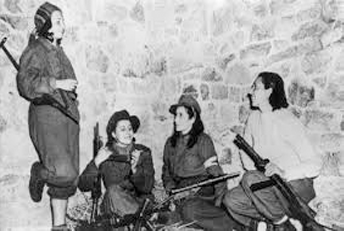
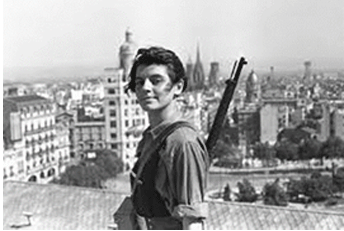
Unlike Futurist letterate women who, like their male counterparts (eg., Marinetti), wrote their own Manifesto endorsing and glorifying war, mainly poor illiterate women protested in Sicily and elsewhere, against participation in the first colonial expeditions after unifications, to protect their sons from being slaughtered in Africa for reasons unknown to them and similarly also against their offs prings going off to WW1. These wars provided the opportunity for major steps forward for women in the industrial North, not for most women in the South who lost their sons and maybe also their husbands, tragically, had hardly any means of supporting themselves. During WW1, while men were at war more and more women began working in factories, especially in the North. Since they earned a salary and their husbands were away at war they also became head of the family in charge of the home and had thus a taste of power and independence which they would not release easily or not entirely when the husbands returned (Bimbi, 1993).
During the long period of the fascist dictatorship the social political, educational and professional position of women was legally downgraded with many laws and quotas preventing women from entering certains degrees or professions (see chronology) while encouraging women to see their main role as mothers (Mafai, 1987). However, not all women followed this message. Especially in urban areas such as Turin, women in general (Passerini, 1987) and in Rome, middle class women especially, but not exclusively, continued to go to high school (de Céspedes, 1938; Carroli, 2000, Carroli 1993a), aimed to have a profession besides having a family (Pickering-Iazzi, 1994). Women’s rebellion against the woman-mother fascist ideal was kept alive in many ways, including: non-consenting writings; daily women’s non-conforming behaviours; subtexts within journals (e.g., Rassegna femminile italiana); women’s organisations; even mainstream advertising portraying women as professional, thin and elegant women (Mondello, 1987).
Women’s active participation in the Resistance movement and in occupied areas after the fall of Mussolini is well known, also thanks to many studies undertaken by scholars in Italy and abroad (e.g., Revelli, 1985; Passerini 1987; Bimbi, 1993; Donne e la Resistenza in Emilia Romagna, 2011). Women joined partisan forces as fighters and carried out many other roles including that of “staffette” women who ran back and forwards from German occupied areas and partisan hiding places relaying information, bringin them supplies, risking their lives, also being captured, tortured and murdered as shown in the book by Renata Viganò, the only one following the war with a woman ‘heroine’ (Viganò (1949). Infact, shortly after Liberation, women’s influential presence during the Resistance, was quickly forgotten or hidden, to avoid repercussions on women’s good character and morals. The significant women presence has only begun being researched and made known in the seventies and ninenties: 35,000 women in combat groups [ii] 20,000 patriots supporting the partisan liberation war, 70,000 involved in the organisation of the defense groups, 16 Gold medals, 17 Silver medals, 512 war inspectors; 682 executed or fallen; 4633 arrested, tortured and imprisoned by fascists and nazis, 1890 deported in Germany; these are the numbers documented by the Associazione Nazionale Partigiani d’Italia (Maffeo, n.d.).
Women were also ‘Antigones’ involved in taking care of the burial of dead partisans; some were barely teenagers, the most famous was perhaps Oriana Fallaci who, as she recounts in her world-famous novel, Lettera a un bambino mai nato [Lettet to a Child Neverborn]. At 13 years-old Fallaci was one of the staffette, fearlessly crossing the lines to accompany anglo-american prisoners towards allied forces; she also brought newspapers to her father who had joined the Resistance fighters. “Non aveva paura, la paura è degli adulti”. Among the women tortured and murdered is Irma Bandiera, one of the few women included in the Padiglione Italia at the Venice permanent Biennale. Born in Bologna in 1915, she was murdered at age 29 in Bologna in 1944 after being tortured and refusing to reveal the names of her partisan peers despite being blinded. She was known as Mimma. Her body was exposed by fascists in front of her home (Restelli, 2014/15). She was awarded a Gold Medal in 1944.
Despite such clear demonstrations of extreme courage and strength, and the extensive participation of women of all classes, which affected the values of the partisan communities, where they were equal, when it was all over, the victory belonged to men alone. When they participated in the immediate post-war Liberation parades that took place all over Italy, often partisan women were booed and humiliated. Many considered them loose women because they had lived with men. This unfair treatment, either scorn or oblivion, is called also “resistenza taciuta” [“silenced resistance”]. It was represented only in a few movies, newspaper, and literature immediately after WW2 as most neorealist cinema and literary texts by main male authors also forgot about their female peers’ resistance fighters, preferring to portray women as either prostitutes, spies or victims.
Alba de Céspedes, having escaped from Rome before the Germans occupied it, set up Radio Bari and talked to the Allies and the partisans from there (Carroli 1993a). She related this experience in the first review funded by her in Rome as soon as the city was liberated, “Mercurio”. In her first articles and in her post-war novels she also protested against this denial and silencing (Carroli, 1993ª; Carroli, 2000; de Céspedes, 1940, 1946, 1949, 1952, 1955, 1956, 1967). As testified in the novels of de Céspedes, chosen because she traces the long uneven path of women’s emancipation from before WW1 to the Sixties, including women participation in the Resistance. It took another 20 years at least for women to recover from fascism and the war, and 60 years or longer for Italians to begin to come to terms with the atrocities of Italian colonialism. Admittedly, this slow recovery and amnesia was also due to the enormous task of material reconstruction carried out in Italy after Liberation. Perhaps also because of this massive task, Italians, also in regard to colonialism, women’s participation in resistance and society, chose oblivion over social cultural and political renovation.
4. The battle for divorce, birth control and abortion
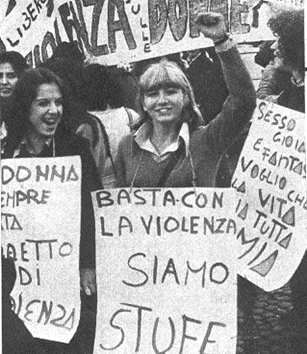
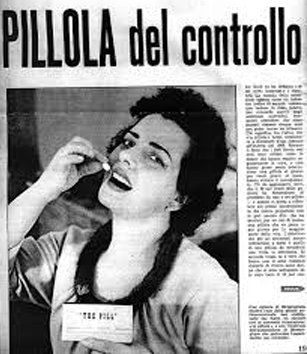
The seeds planted during the century-long trajectory and especially the economic independence gained during WW1, the education campaign carried out through to WW2 and afterwards, the death of many soldiers during the wars and the colonial campaigns, meant that many women were needed in all fields, thus many found employment easily, especially in the North and Centre. With the participation in the Resistence had come the beginning of politicization, which many women passed onto to their daughters. With education came knowledge of societies with more freedom, French and American for example, hence women joined the political movements against the Vietnam war in Italy, and also the first protests and barricades set up in Rome in March 1968 in the Faculty of Architecture, 2 months ahead of the Parisian May. Now a cliché, not then, the wind of change was definitely blowing, and nobody could stop it. And women could not be stopped either. Not by their male peers either, unlike after the Resistance!
After this first movement, women, students, factory workers, white collar workers, women, with their male counterparts, in rural areas in the North and South gained forces and in 1973 the first non-discriminatory Worker’s Charter was drawn up. In what is known as the battle for housing in Turin 600 families, from the South and the North alike, fought and occupied vacant blocks in collective actions. From the end of 1975 women’s movement gained national proportions (Ginsborg, 1990).
The main legal battles were aimed at achieving Laws introducing divorce and the legalisation of abortion. This process, especially abortion, was lead by women’s groups that had began to be set up in major cities initially, from the early 1970’s, and gradually also grown to smaller centres in the provinces and rural areas. Their initial concerns were to be free of the patriarchal structures that had kept them prisoners for centuries, the family, the institutions of marriage and the lack of birth control and control over their bodies, as well as the right to equal payed employment. Hence equality between men and women, as well as admitting the enormous diversity between Italian women was the first step to formulate agendas and projects. While in France and the USA women were busy working together in fields such as psychoanalysis and Liberation (NOW: the personal is political), initially in Italy movements concerned themeselves with achieving more pragmatic tasks that concerned and affected all women, hence the movement became national. The first major victory in Italy was the law regulating divorce. In 1974, the referendum on divorce, held on 12 and 13 May, recorded a definite majority in favour of the possibility to dissolve marriage (19,138.300: 59,26 % versus 13,157.558: 40,74 %).
The major national feminist groups were: Rivolta femminile which denounced marriage as the site of male domination; Lotta femminista instead, more concerned with equality, introduced the slogan “wages for housework”; the UDI (Unione donne italiane) linked to the PCI (Italian Communist Party) placed more emphasis on policies to change women’s oppressions. The powerful MLDA (Movimento di Liberazione delle Donne italiane), closely connected to the Radical Italian Party, which became the party responsible for civil right bills for the introduction of abortion and legalisation of marijuana, very wisely combined claims for equality (discrimination in schools and the workplace) with women’s autonomy (contraception and the liberalisation of abortion). In Rome (6 Dec. 1975) the first mass demonstration of women’s movements, made up of 20,000 women took place. The interference of male ‘compagni’ belonging to the Roman section of Lotta continua, who protested at an only female march, made it clear to feminists that their agenda did not coincide with that of their leftist counterparts. Lotta continua women members occupied the Rome headquarters of Lotta continua that same night (Ginsborg 1990).
In 1975 the Radical Party together with the MLD began collecting signatures for a referendum on abortion, 80,000 were needed, and 500,000 were collected. In April, 60,000 women marched in Rome in favour of the referendum but the 1976 election stopped it (Banotti, 1971; Caldwell, 1991; Passerini, 1993). After a long and bitterly fought struggle between the women’s movement, the Radical party, backed by other parties but hindered by the DCI (Christian democrats several times), which had begun in 1973, finally, a bill of Law was passed in June 1978.
Women’s movement developed very quickly and independently form then onwards, however with different groups in different places, each developing their own agenda and practices and their own feminist thought.
5. Feminist theories and practices – Major debates and texts (1980s onwards)
Italian Feminist thought is not well known outside of Italy. A major obstacle was perhaps the language. Unlike for the major French feminist texts, translated almost immediately in English and other major languages including Italian, translations of Italian texts waited at times even 10 or 20 years before beeing known abroad. In the 1990s, when more Italian scholars began working in universities outside Italy and participating in more conferences in faraway countries such as Australia, there was a renewed interest in Italian Feminism, after the partial ‘regression’ of the 1980s in the bubble of the apparent economic boom.
Rather than dedicating a few lines to all the worthy associations, groups, circles, and Centri di documentazione della donna, spread throughout Italy, all active in different projects aimed at transmitting and reinforcing feminism and women’s cultural worth, I will focus on some plans, or figures that caught my attention and whom I have known personally.
One pragmatic example of how it is possible to improve the life of women and their families was put into practice in some cities in Emilia-Romagna in the 1990s. The Unione donne italiane had always been active in developing better working conditions for women, in the 80s and 90s it carried out a new women’s revolution to improve women’s conditions at home, and in what they called the ‘third’ time (caring for children, relatives, school involvement etc). As Valentini (1990) highlighted, most of these tasks were carried out by women, who in fact had, not 2 but 3 occupations. The women of the communist party campaign, entitled “Sono una donna, non sono una trottola” [I am a woman, not a spinning top”] proposed a bill of Law entitled “Le donne cambiano i tempi. Una legge per rendere più umani i tempi del lavoro, gli orari della città, il ritmo della vita” [Women change the times. A law to render more humane working times, city timetables, the rythm of life].
The law proposal was immediately described as utopian, however, it was nevertheless put into practice in some ‘comuni’. A mayor in particular, Alfonsina Rinaldi, took matters in her own hands, and introduced better bus timetables, opening and closing times of shops, kindergartens, schools, council rooms in Modena. This represented a step forward in the everyday life of everyday woman. A conceptual issue dear to women in Emilia-Romagna, Tuscany and Umbria in particular, because of the historical link with the PCI. In Emilia-Romagna and other regions there are also Women’centres aimed at sheltering women from violent environments, such as SOS Donna (Faenza), based in my hometown. Located in the Centro Antiviolenza, this association helps women who are or have been the victim of violence, or are experiencing hardship of any kind.
When I gave my first paper, on lullabies (Carroli, 1993b), at the second conference of Women in Italian culture in Melbourne, organised by the historical feminists Mirna Cicioni and Nicole Prunster, and I met the keynote speakers, the experience literally changed my life and gave me renewed hope that feminism was not over, it was just different. These extraordinary women were: psychoanalyst Silvia Vegetti Finzi, lawyer Tina Lagostena Bassi, known as ‘l’avvocato delle donne’ for her strenuous struggle to introduce laws protecting women from violence, and physicist Elisabetta Donini, at the time lecturer at the University of Torino, and now a member of the Centro Interdisciplinare di Ricerche e Studi delle Donne (CIRSDe) of the same University.
Lagostena Bassi gave a paper on advancements in laws against violence perpetrated on women and the still awful treatment of violated and battered women by police and during trials, while Donini offered a new take on feminism, a kind of global echological movement bringing together women from different nations to find scientific ways to improve life on the planet – enlightening. However, what hit the mark for me, maybe because it was a time in my life when I began reassessing motherhood, through my mother, and my grandmothers’ experience, was Vegetti Finzi’s paper on the ‘bambino della notte’, the child of the night (1990). In her enlightening talk, Vegetti Finzi also explained crucial concepts of Carla Lonzi’s unique feminist thought (1974), the relevance and influence of the review Speculum, as well as Adriana Cavarero’s and Luisa Muraro’s innovative notions. Cavarero and Muraro are the two major theoriticians of the Verona philosophical association Diotima.
The major contribution of this association whose thought expanded to Milan, Bologna and Parma, is the development of a female anthropology based on a new understanding of differences which avoids women being excluded and marginalised. There is no universal ‘sorellanza’, women are individuals and are all different. However, what is possible instead is ‘affido’, a relationship in which a woman who has more power and knowledge helps another woman who is weaker and needs to become stronger. This model, hard and intransigent, was proposed by the Libreria delle donne in Milan. It actually made its way even at the Australian National University, though nobody seem to know it originated in Italy. The model was useful but also potentially dangerous, as it could be used in a hierarchical superior – inferior role placing the ‘weak’ woman, as understood also in the Gramscian subaltern structure. It is nevertheless an attempt to reduce the gap between powerful academic women and women in less powerful positions.
What hit a chord with me, personally, though, was Vegetti Finzi’s idea of mothering, her struggle to conceive, and her projection of the child of the night. Briefly, this ‘imago’ is carried by each woman’s unconscious and expresses the generative power of the female body. The lunar child is also encapsulated by girls’ fantasy to be able to give birth to a baby of their own. That desire had definitely been denied by me, or purposefully crashed as soon as I became a teenagers and understood that marriage and child bearing was often a burden to many women, it certainly limited their independence. I also was terrified at the idea of being a bad mother. Vegetti Finzi’s thought on maternity stirred up many repressed memories and fears, yet, it also raised some hope. That child could perhaps be born and be happy. So he was.
6. Major issues and outcomes post 2000
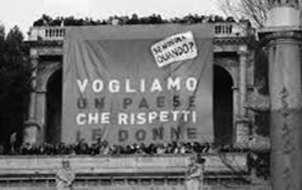
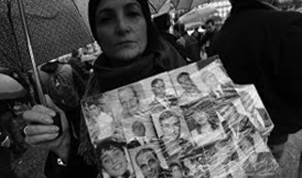
Although women in Italy have made powerful economic, occupational, advances in many fields in the public sphere (Ionta, 2015), the percentages of women in the upper echalons of the public service, academia, politics, business, literary environments (Prizes, canon, juries), are still lower than their male counterparts (Oliva, 2011). This is a common issue across the world, not just in Italy. The same happens in the private sphere, for example in the share of housework, and what Italian feminists call ‘terza cura’, taking care of children, accompanying elderly parents to the doctor’s (Donna, 2016). These are tasks are covered mostly by women, either mothers, daughters, or domestic carers.
In Italy, many domestic carers are immigrant women from the ex-Soviet Eastern Block or the Philippines (Carroli and Gerrand, 2011, 2014; Carroli, 2012, 2013, 2015). Many are exploited or work in black. This means that they have no right to medical care and will not be eligible for a pension. This has called for a major review of what it means to be a feminist currently in Italy. However, is it necessarily exploitation to provide work for immigrant women who escape worse situations in their countries or in Italy, for example, forced prostitution and \ or bearing children sold illegally (see for example: Carroli, 2013). Individual women who hire domestic helpers (COLF: Collaboratrici familiari) take on this responsibility: to treat immigrant women as other women, neither as inferiors nor patronisingly, simply as fellow citizens, whether they are or not, pay them regular rates and treat them with respect. Since they are in a more vulnerable position often, any feminist who would call herself so, or any woman of dignity, would try her best to help these women towards legal and cultural integration while also encourage them to keep their values and language.
The thorny issues of cultural values contradicting the victories of feminism globally, held by some minorities or some immigrants, and perhaps some new citizens, is a deep concern debated all over the world. How to respect strict values, while however encouraging women to come out and adopt less limiting standards, if they so wish? It is an issue that feminism must face over the next 20 years or more. Family violence and feminicide is heterogenous, it is not related to particular environments of some families or communities (Oliva and Araldi, 2015, Cavarero, 2007). Another major issue, related to illegal immigration and refugees, is that of prostitution, including child disapperance and pedophilia.
The proposed law by the Lega Nord backed also by Berlusconi, for the reintroduction of brothels, has raised massive controversy in Italy. The appalling conditions in which women, mainly from the ex- Eastern block and Africa, are kept - as ‘modern’ sex slaves, after having been brought to Italy and Europe with the promise of jobs, sometimes by relatives, is horrific. The few who escape and are saved mainly by religious or local organisations, must stay in hiding all their lives if they wish to avoid the fate of others who were tortured and murdered. This massive trade includes internet pornoghraphy and snuff movies. It must be stopped. How? Nobody seems to have answers and efficient measures. Organisers of of this slave trade, controlled by the various mafias, are often one step ahead of even of police specialised in intersecting electronic communications among people’s smugglers, as well as people’s illegal movements across borders. This beyond desperate situation has led even some women to vote for the introduction of some regulations to provide more security and attempt to prevent such utter exploitation, forced prostitution and also child sale, kidnapping and abuse (Carroli, 2013).
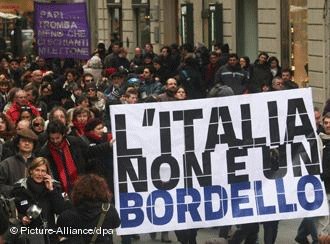
Italy’s birthrate, the financial crisis and the pope
Although the current pope is progressive and open-minded, and has taken a humanitarian approach towards immigrants and refugees, his perspective on birth control and prevention still adheres to ancient traditional ideas not in line with today’s women’s predicaments. Especially in the developing world, women are struggling with pregnancies, starvation and often carry most of the family load. While there are no comparisons with the amount of suffering and economic hardship between Italy, Europe and developing countries, there are still enormous gaps between North and Southern Italy, economically and culturally, in terms of employment and also. As a consequence, women in the South still have less opportunity for indipendence.The crisis that has affected Italy since the 1990s has hit southern women
in particular (Donne in Italia, 2011), and shows no sign of relief. How
can unemployed women (including immigrant and romani women) in the South
or in poor metropolitan areas have children? When at times the only choice
is to send them into begging, prostitution or to work for the various mafias?
As the table below clearly shows, Italy’s birth-rate, declined sharply in
1974, when divorce was introduced, birth control became available, and later
abortion was regulated. Then it plateaued in the 1990s and increased in
mid-2000, probably as a result of immigration. Since then it has decreased
sharply to coincide exactly with the long financial crisis that has hit
Italy.
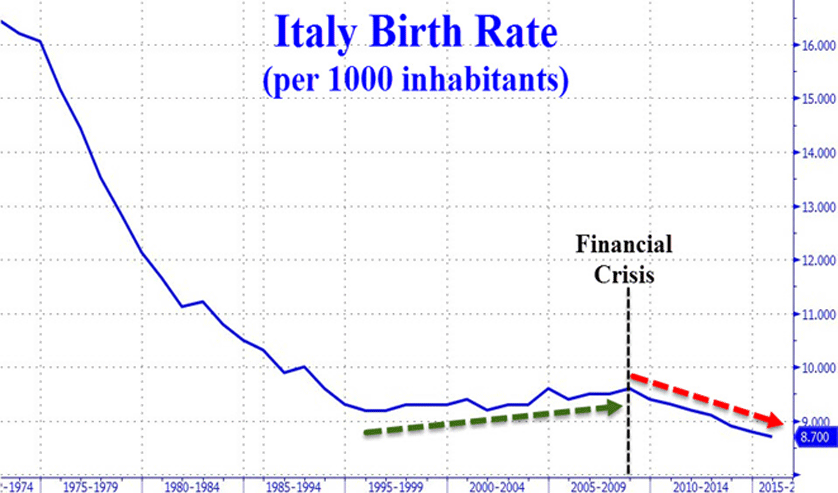
“Italian women would "like to have more [children], but the conditions
just aren't good enough," laments one new mother as CBS News reports,
official figures show that in 2014 there were fewer babies born in Italy
than at any time since 1861. "Nowadays people don't want to raise
their child in poverty," but Pope Francis had a different opinion,
as The Guardian reported, "a society with a greedy generation, that
doesn't want to surround itself with children, that considers them above
all worrisome, a weight, a risk, is a depressed society" (Durden,
2015, online).
In this environment would it not be irresponsible to bring children into the world perhaps? Echological feminist approaches to women’s bodies, migrations and citizenship, for examples, Rosi Braidotti’s or Grozs’ thought, (see: Nomadic Philosopher, 1996; Lennon, 2014), favour all-inclusive cultural answers, rather than legal or political solutions to the current global refugee plight. Conservative catholics argue that children are always a gift and resource, but this is disproven by statistics. Now is the time to find new sustainable trajectories, more humane, and respectful also of nature, looking neither at the law of the market alone, or at family ways of living that are superceded, and were never ideal, such as the patriarchal extended family, where women had no say (Carroli, 1993b).
Quo vadimus? Concluding remarks - Feminist contribution and needed improvement
Although feminism brought significant changes to Italian legal, educational, working and political system and Italian society in general, there are still many areas that need improvement. There has never been a woman prime minister in Italy, nor are there many women ambassadors or in top positions in the public administration. In advertising often women are still represented as either home workers or sluts. This model is continuosly repeated by most media, this in turn may contribute to increase this distorted dualistic model as well as violence, by devaluing women (Oliva and Araldi, 2015). There is also still geographical and social disparity. A significant cultural change is needed, based on knowledge of womens’ value, women’s contribution to Italian history, society, education. Hopefully, immigration, and current discussions on what it means to be Italian (Carroli, 2016a, b, Carroli, 2015b, Carroli and Gerrand, 2014; Carroli, 2009, 2006, 2005) may spur a new solidarity among women, a new national feminism, made up of women of all colours, shapes and cultural background in Italy.
Different groups throughout the peninsula carrying out specific hands-on projects may be a strengh rather than a weakness as far as making a difference for some women in specific situations. However, the dramatic political situation and the increasing feminicide, as well as deteriorating conditions in poorer regions and metropolitan areas, calls for another mass feminist movement, in Italy, in Europe, in the world, capable of mobilising masses of people asking for change at all levels, including cultural transformation, with a clear, yet flexible plan on how to implement necessary improvement. Such a plan may be utopian but as philosophers Hanna Arendt and Rosi Braidotti affirm what else is left if not hope, for change for the better at an individual and societal level?
On this affirmative note I end this brief survey of Italian feminism and women in Italian society with the celestial image of Samanta Cristoforetti, dottorata from Bologna University, floating in space. In 2014 the Italian astronaut broke the record for the most time in space (200 days) on a single mission by a woman.
Bibliography
Araldi, Elena. 2015. Il corpo delle donne. https://www.youtube.com/watch?v=5m4oM_gcZe4
Adler, Sara Maria. 1988. "Veronica Franco's Petrarchan
Terze rime: Subverting the Master's Plan," Italica Vol. 65, no. 3,
pp. 213-33.
Aleramo, Sibilla. 1906. Una donna. Roma-Torino: SocietàTipografico-Editrice
Nazionale.
Allen, Beverly, Muriel Kittel and Keala J. Jewell. 1986. The Defiant Muse: Italian Feminist Poems from the Middle Ages to the present. A bilingual Anthology. New York: The Feminist Press.
Anderlini-D’Onofrio, Serena. 1994. I don’t know what you mean by ‘Italian Feminist Thought.’ Is anything like that possible? In G. Jeffries Miceli (ed.), Feminine Feminists: Cultural practices in Italy. Univ. of Minnesota Press.
Artemisia Gentileschi - Biography & Art - The Art History Archive. www.arthistoryarchive.com/.../Artemisia-Gentileschi.html
Banotti, Elvira. 1971. La sfida femminile. Maternità e aborto. Bari: De Donato.
Barraclough, Corrine. 2016. «Feminism doesn’t care about women», Daily.Telegraph.com.au, Friday, July, 29, p. 74.
Bianchi, Stefano. 2013. La scrittura poetica femminile nel Cinquecento veneto: Gaspara Stampa e Veronica Franco. Manziana: Vecchiarelli.
Bigolina, Giulia. 1550. 2005. Urania. A Romance. Edited and Translated by Valeria Finucci. The Other Voice in Early Modern Europe. University of Chicago Press. http://press.uchicago.edu/ucp/books/book/chicago/U/bo3534746.html . Accessed 2 August 2016.
Bimbi, Franca. 1993. Three generations of women: Transformations of female identity models in Italy. In Mirna Cicioni and Nicole Prunster (eds.), Visions and Revisions: Women in Italian culture. Oxford: Berg. Pp. 149-165.
Bono, Paola and Sandra Kemp. 1994. Introduction: Coming from the South. Italian Feminist Thought: A reader. Oxford: Blackwell. Pp.1-29
Braidotti, Rosi. Latisana (Udine) 1954 - viventepere-condotta-br-dalle-minerve-d-italia#.V5lljE1-Opo http://www.enciclopediadelledonne.it/biografie/rosi-braidotti/. By Annamaria Tagliavini.
Braidotti, R. 2005. Madri, mostri e machine. Roma: Manifestolibri.
Caldwell, Leslie. 1991. Italian Feminism: Some considerations. In Z.G. Baransky and S.W. Vinall (eds.), Women and Italy. UK: McMillan.
Caldwell, L. 1998. Abortion in Italy. https://www.academia.edu/21097338/Abortion_in_Italy. (Paper can be requested online).
Carroli, Piera. 2016a. «La Guerrera: Marilù Oliva Warrior Trilogy», Carroli, p. (2016), Vol. 2 No. 1, Special Issue PLACE AND CULTURE IN ITALIAN CRIME FICTION. Barbara Pezzotti and Brigid Maher (eds.). http://www.australiancrimefiction.com/. Accessed 7 July 2016.
Carroli, Piera. 2016b, '"Le sultane" di Marilu¹ Oliva. La recensione di Piera Carroli (The "sultane" of Marilu'¹ Oliva. The review by Piera Carroli)'. RADIO SBS.
Carroli, P. 2016c, 'Book Review: On Brunswick Ground di Catherine de Saint Phalle', libroguerriero, vol. 8 June. Online Italian Literary Review.https://libroguerriero.wordpress.com/2016/06/08/on-brunswick-ground-di-catherine-de-saint-phalle
Carroli, P. 2015a, 'Marilu Oliva and La Guerrera on Memory and Trauma in Noir', Literary Criticism Conference LITCRI '1, ed. Baris Ozturk, DAKAM Publishing, Istanbul Turkey, pp. 384-396.
Carroli, P. 2015b, 'Beyond Amnesia and Colonialisms: Re / Writing the Past to forge new Italian Identities and Literatures', Literary Criticism Conference LITCRI '1, ed. Baris Ozturk, DAKAM Publishing, Istanbul Turkey, pp. 205-215.
Carroli, P. & Gerrand, V 2014, 'Italian Literature Becomes Nomad: Metamorphosis from Within/Without', in Grace Russo Bullaro and Elena Benelli (ed.), Shifting and Shaping a National Identity: Transnational Writers and Pluriculturalism in Italy today. United Kingdom: Troubador Publishing Ltd. pp. 203-223.
Carroli, P. 2013a, 'Encyclopedia Entry Review and annotation': "Eleonora Gonzaga", Mary Hays, Female Biography; or, Memoirs of Illustrious and Celebrated Women, of All Ages and Countries (1803) Volume II. Chawton House Library Series, volume 8', in Gina Luria Walker (ed.), Memoirs of Women Writers Part II, Pickering & Chatto Publishers ltd, London UK, pp. 580-581.
Carroli, P. 2013b. 'Encyclopedia Entry Review and annotation': "Theodora Dante", Mary Hays, Female Biography; or, Memoirs of Illustrious and Celebrated Women, of All Ages and Countries (1803), Volume II. Chawton House Library Series, volume 8', in Gina Luria Walker (ed.), Memoirs of Women Writers Part II, Pickering & Chatto Publishers ltd, London UK, pp. 515-516.
Carroli, P. 2013. 'La sconosciuta di Giuseppe Tornatore: La rivendicazione della soggettività e della maternità (Giuseppe Tornatore´s La sconosciuta: Reclaiming Subjectivity and Mothering) ', in William Hope, Luciana d'Arcangeli and Silvana Serra (ed.), Un Nuovo Cinema Politico Italiano?: Lavoro, migrazione, relazioni di genere (A New Italian Political Cinema: Work, Migration, general relationships), Troubador Publishing Ltd, Leicester, United Kingdom, pp. 84-94.
Carroli, P. 2012. 'Book review: "A voice in the Wilderness". Review of Kissing the Wild Woman: Concepts of Art, Beauty, and the Italian Prose Romance in Giulia Bigolina's “Urania”, by Christopher Nissen', Forum Italicum, vol. 46, no. 2.
Carroli, P. 2008. 'Alba De Céspedes: Roma 1911 - Parigi 1997', in Lucia Strappini (ed.), Is senso narrante, Guerra Edizioni, Italy, pp. 371-374.
Carroli, P. & Gerrand, V. 2011. 'La mia casa è dove sono: Subjects and narratives beyond national border (My house is where I am)', Scritture Migranti (Rivista di Scambi interculturali, Dip. di Italianistica, Universita' di Bologna), vol. 5, pp. 81-104.Forhtcoming Nov. 2012.
Carroli, P 2010, 'Camilleri's Detective Narrative: The Global Triumph of a Sicilian Inspector', in Venera Fazio and Delia De Santis (ed.), Sweet Lemons 2: International Writings with a Sicilian Accent, LEGAS, New York, pp. 156-160.
Carroli, P 2010, 'Oltre Babilonia? Postcolonial Female Trajectories towards Nomadic Subjectivity', Italian Studies, vol. 65, no. 2, pp. 204-218.
Carroli, P. 2010. 'Book review: Mass Culture and Italian Society: From Fascism to the Cold War', Journal of Modern Italian Studies, vol. 15, no. 1, pp. 164-166.
Carroli, P. 2009. 'Itinerante Literature in Europe: From Life-Writing to Linguistic and Cultural Hybridity', Annual Hawai International Conference on Arts and Humanities 2009, ed. Conference Program Committee, Hawaii International Conferences, Honolulu, pp. 2070-2089.
Carroli, P. 2009. 'Identity and Subjectivity in Post Migrant Italian Literature: Igiaba Scego's Rhoda and "Salsicce"', Annual Hawai International Conference on Arts and Humanities 2009, ed. Conference Program Committee, Hawaii International Conferences, Honolulu, pp. 2110-2128.
Carroli, P. 2008. Literature in Second Language Education: Enhancing the Role of Texts in Learning, Continuum Publishing Company, London, United Kingdom.
Carroli, P. 2008. 'Juxtapositions of Old and New Sicily in Camilleri's Detective Literature', Journal of Sicilian Folklore and Literature, vol. 29, no. 1 & 2, pp. 44-55.
Carroli, P. & Speziali, C. 2006. 'Italia europea e mediterranea: diversita', unita', interculturalismo (European and mediterranean Italy: diversity, unity and interculturalism)', in B. Van den Bossche, M. Bastianensen, C. Salvadori, Lonergan, S.W. (ed.), Italia e Europa: Dalla cultura nazionale all'interculturalismo, Franco Cesati, Florence Italy, pp. 29-35.
Carroli, P 2006, 'L'Africa in Italia: Dialogo e scambio interculturale nel racconto di Pap Khouma, Io, venditore di elefanti. (Africa in Italy: Dialogue and intercultural exchange in the story of Pap Khouma I seller of elephants)', Rivista ILSA, vol. 1, no. 2, pp. 9-14.
Speziali, C & Carroli, P 2005, 'L'Italia fuori d'Italia', Societa Internazionale di Linguistica e Filologia Italiana 2004, ed. Korzen, Iorn, Samfundslitteratur Press, Frederiksberg, Denmark, pp. 1-13
Carroli, P. & Maurer, L. 2005. 'Issues of inclusion and representation: Teaching literature and culture across art forms', International Congress of FILLM 2002, ed. Duangsamosorn, S., et al., Editions Rodopi B.V., Amsterdam, pp. 113-130.
Carroli, P & Speziali, C 2004, 'Benvenuti in questo ambiente: intersezioni tra libro e computer (Welcome in this environment: intersections between book and computer)', in Paolo D'Achille (ed.), Generi, architetture e forme testuali: atti del VII Convegno SILFI, Societa' internazionale di linguistica e filologia italiana (Genere, architecture and text forms: excerpts of the VII Conference SILFI), F Cesati, Florence, Italy, pp. 277-284.
Carroli, P. 2000, 'Alba de Cespedes Revisited', in Nerenberg, E; Callucci, C (ed.), Writing beyond Fascism: Cultural Resistance in the Life and Works of Alba de Crespedes, Fairleigh-Dickenson University Press, Madison, New Jersey, pp. 37-58.
Carroli, P. 2000, 'Susanna Tamaro', 'Natalia Ginzburg', 'Alba de Céspedes', 'Camilla Cederna', 'Elsa Morante', 'Francesca Duranti', in Gino Moliterno (ed.). Routledge Encylopedia of Italian culture.
Carroli, Piera. 1996. «Quaderno proibito: A silenced woman’s voice in post-war Italy», “Donne, scrittura e potere”, Studi d’Italianistica nell’Africa australe, vol. 9, no. 2. Pp. 99-113.
Carroli, Piera. 1993a. Esperienza e narrazione nella scrittura di Alba de Céspedes. Ravenna: Longo.
Carroli, Piera. 1993b. The role of women in the lullabies of Emilia-Romagna and Tuscany. In Cicioni and Prunster (eds.), Visions and revisions. UK: Berg.
Cavarero, Adriana. 2007. Orrorismo. Ovvero della violenza sull'inerme, Milano: Feltrinelli. (Traduzione inglese: Horrorism: Naming Contemporary Violence, 2008. New York: Columbia U.P.). (Traduzione spagnola: Horrorismo. Nombrando la violencia contemporánea. 2009. Barcelona: Editorial Anthropos).
Cavarero, Adriana, 1987. L'elaborazione filosofica della differenza sessuale. In AA.VV., La ricerca delle donne. Torino: Rosemberg e Sellier. pp. 173–187. (English translation: "The Need for a Sexed Thought". 1991. In Italian Feminist Thought, S.Kemp and P. Bono (eds.). Oxford: Blackwell).
Cavarero, Adriana. 1987. «Essere presso di sé: noi che non fummo ad Itaca», DonnaWomanFemme, Vol. 4. pp. 11–16.
Chiavola Birnbaum, Lucia. 2002. Dark Mother: African Origins and Godmothers. iUniverse.
Chiavola, Birnbaum, L. 1993. Black Madonnas: feminism, religion, and politics in Italy. Northeastern University Press.
Chiavola Birnbaum, L. 1986. Liberazione della donna.
Feminism in Italy. Middleton, Connecticut: Wesleyan University Press.
Colonna, Vittoria (1490-1547) Italian women writers’ database. Chicago
University. https://www.lib.uchicago.edu/efts/IWW/BIOS/A0011.html
Accessed 28 July 2016.
Colonna, Vittoria. 2005. Sonnets for Michelangelo. Edited and translated by Abigail Brundin. The Other Voice in Early Modern Europe. Chicago: University of Chicago Press.
Cox, Virginia. 2005. "Women writers and the canon in sixteenth-century Italy: the case of Vittoria Colonna." In Strong Voices, Weak History: Early Women Writers and Canons in England, France, and Italy, ed. Pamela J. Benson and Victoria Kirkham. Ann Arbor: University of Michigan Press.
Cristina Trivulzio di Belgiojoso. http://www.cristinabelgiojoso.it/
Christine de Pisan. http://www.biography.com/people/christine-de-pisan-9247589
De Céspedes, Alba. 1938. Nessuno torna indietro.
Milano: Mondadori. There is no turning back. 1941.Transl. by Jan Noble.
London: Jarrolds.
L’Anima degli Altri. 1935. Roma: Maglione.
Prigionie. 1936. Lanciano: Carabba.
Io, Suo Padre. 1936. Lanciano: Carabba.
Concerto. 1937. Lanciano: Carabba.
Nessuno Torna Indietro. 1938. Milano: Mondadori.
La Fuga. 1940. Milano: Mondadori.
Dalla Parte Di Lei. 1949. Milano: Mondadori.
Quaderno Proibito. 1952. Milano: Mondadori.
Gli Affetti Di Famiglia. 1952. Sipario, no. 75, pp. 37-56.
Le amiche. 1955. An adaptation of Cesare Pavese’s novel Tra donne sole, an adaptation, co-written by Alba de Céspedes and Suso Cecchi d'Amico, and directed by Michelangelo Antonioni.
Invito A Pranzo. 1955. Milano: Mondadori.
Prima e Dopo. 1956. Milano: Mondadori
Il Rimorso. 1967. Milano: Mondadori.
De Giorgio, Michela. 1996. «Women’s history in Italy (nineteenth and twentieth centuries) », Journal of Modern Italian Studies, Vol. 1, no. 3, pp. 413-431.
Diberti-Leigh, Marcella. 1988. Veronica Franco: Donna, poetessa e cortigiana del Rinascimento. Ivrea, Italy.
Donna. 2016. Urban Post. http://urbanpost.it/donne-che-lavorano-intervista-al-sindaco-silvia-marchionini-una-donna-si-deve-impegnare-il-triplo-per-farcela
Donne in Italia. 2011. Una grande risorsa non ancora pienamente utilizzata. I principali indicatori sulla condizione sociale ed economica delle donne e sulle criticità irrisolte della partecipazione femminile al mercato del lavoro. http://www.italialavoro.it/wps/wcm/connect/286ffd004e30b06797849759535ba122/Donne_Italia_def.pdf?MOD=AJPERES. Accessed 3 August 2016.
Donne nell'Antifascismo e nella Resistenza in Emilia Romagna. http://www.donneresistenza.it/Introduzione.htmn Accessed 4 August 2016.
Femminismo (Breve percorso storico sull'evoluzione del). Timeline Italia / Mondo. http://timerime.com/en/event/1223882/Le+prime+votazioni+in+Italia/ Accessed 27 July 2016.
Fonte, Moderata. 1988 (new edition). Il merito delle donne: ove chiaramente si scuopre quanto siano elle degne e più perfette de gli uomini. Edited by Adriana Chemello. Milano: Eidos.
Fonte, Moderata. 1995. Tredici canti del Floridoro. Edited Valeria Finucci, Modena: Mucchi.
Ginsborg, Paul. 1990. «Feminism. » : Society and politics 1943-1988. London: Penguin. Pp. 366-370.
Ionta, Federica. 2015. Le 10 manager italiane più innovative. Dal turismo alla fisica, passando per la moda e la politica monetaria: ecco le scienziate e imprenditrici italiane più famose al mondo, 3 March, 2015, http://www.wired.it/attualita/2015/03/03/10-donne-top-manager-italiane-innovative/
Jones, Ann R. 1990. The Currency of Eros: Women's Love Lyric in Europe, 1540-1620. Bloomington and Indianapolis, Ind..
La lotta del sapere condotta dalle Minerve d'Italia.http://www.9colonne.it/28017/la-lotta-del-sa.Accessed 28 July 2016.
Lazzaro-Weiss, Carol. 1990. From margins to mainstream: Some perspectives on women and literature in Italy in the 1980s. In S.L. Aricò (ed.), Contemporary women writers in Italy: A modern renaissance. University of Massachusetts Press.
Lennon, Kathleen. 2014. Feminist Perspectives on the Body, Stanford Encyclopedia of Philosophy, http://plato.stanford.edu/entries/feminist-body/. Accessed 8 August 2016.
Lonzi, Carla. 1974. Sputiamo su Hegel. Milano: Rivolta femminile.
Nomadic Philosopher. 1995. A Conversation with Rosi Braidotti. With Kathleen O'Grady. Utrecht, The Netherlands: August. http://bailiwick.lib.uiowa.edu/wstudies/Braidotti/
Mafai, Miriam. 1987. Pane nero. Milano: Mondadori.
Maffeo, Stefania. STORIA DELLE DONNE PARTIGIANE: FU UNA RESISTENZA TACIUTA. http://win.storiain.net/arret/num89/artic3.asp. Accessed 4 August 2016.
Magnanini, Suzanne. 2003. “Una selva luminosa: The Second Day of Moderata Fonte’s Il merito delle donne”, Modern Philology, Vol. 101, No. 2 (November), pp. 278-296. The University of Chicago Press. http://www.jstor.org/stable/10.1086/422615. Accessed 20 July 2016.
(Marando, Greta) Compiuta Donzella Firenze XIII
secolo - XIV secolo. Dizionario biografico degli italiani. Rome: Istituto
dell'Enciclopedia Italiana, 1960-.
http://www.enciclopediadelledonne.it/biografie/compiuta-donzella/.
Accessed 27 July 2016.
Mondello, Elisabetta. 1987. La nuova italiana: La donna nella stampa e nella cultura del ventennio. Rome: Editori riuniti.
Nava, Paola. 2011. "Nascita e caratteristiche del femminismo storico in Italia - L'eredità del movimento delle donne alle nuove generazioni". La Clé des Langues. Mis à jour le 23 mai 2011. http://cle.ens-lyon.fr/l-histoire-du-mouvement/nascita-e-caratteristiche-del-femminismo-storico-in-italia-l-eredita-del-movimento-delle-donne-alle-nuove-generazioni-122878.kjsp Accessed: 27 July 2016.
Nissen, Christopher. 2011. Kissing the Wild Woman: Art, Beauty, and the Reformation of the Italian Romance. In Giulia Bigolina’s Urania. Toronto, Buffalo, London: University of Toronto Press.
Oliva, Marilù and Elena Araldi. 2015. Zitta! - Video inchiesta sulla svalutazione delle donne in Italia. https://www.youtube.com/watch?v=_pndFH_Mo8o
Oliva, M. (ed.). 2013. Nessuna più. Quaranta scrittori contro il femminicidio. Roma: Lit Edizioni.
Orefice, Antonella. 2013. “Eleonora de Fonseca Pimentel – La rivoluzione al femminile”, Nuovo Monitore Napoletano. http://www.nuovomonitorenapoletano.it/index.php?option=com_content&view=article&id=428:eleonora-de-fonseca-pimentel-la-rivoluzione-al-femminile&catid=37:biografie&Itemid=28 Accessed 29 July 2016.
Pieroni, Bortolotti, Franca. 1987. Sul movimento politico delle donne. Scritti inediti. Ed. By Annarita Buttafuoco. Roma: Utopia.
Phillipy, Patricia. "'Altera Dido': The Model of Ovid's Heroides in the Poems of Gaspara Stampa and Veronica Franco," Italica 69 (1992): 1-18.
Passerini, Luisa. 1987. Fascism in popular memory: The cultural experience of the Turin working class. Cambridge University Press.
Pickering-Iazzi, Robin. 1994. Unseduced mothers: Configurations of a different female subject transgressing fascistized femininity. In Giovanna Jeffries-Miceli (ed.) Feminine Feminists: Cultural practices in Italy. University of Minnesota Press.
Pizzey, Erin, Jeff Shapiro. 1982. Prone to violence. Hamlyn. Edf? Local?
Restelli, Giancarlo. 2014/15. Le donne nella Resistenza. http://restellistoria.altervista.org/pagine-di-storia/resistenza/le-donne-nella-resistenza/. Accessed 4 August 2016.
Revelli, Nuto. 1985. L’anello forte. Torino: Einaudi.
Rosenthal, Margaret F., 1992. The Honest Courtesan: Veronica Franco, Citizen and Writer in Sixteenth-Century Venice. Chicago University Press.
Rosenthal, Margaret F. 1989. "Veronica Franco's Terze Rime (1575): The Venetian Courtesan's Defense", Renaissance Quarterly Vol. 42, no. 2 (Summer): 227-257.
Salvo, Anna. 2006. Review of Vegetti Finzi, Silvia. 1996. Mothering. New York, London: Guilford. Transl. by Katherine Jason. In, Laura Benedetti, 2006, The tigress in the snow: Motherhood and Literature in Twentieth-century Italy. University of Toronto Press.
Smith, Lindsay, Troy O’Neill, and Piera Carroli. Bianca Capello (c. 1548-87) http://www.projectcontinua.org/bianca-capello/. Accessed May 2016.
Stampa, Gaspara. 2010. The Complete Poems. The 1554 Edition of the "Rime," a Bilingual Edition. Edited by Troy Tower and Jane Tylus. Translated and with an Introduction by Jane Tylus.
Stampa, Gaspara. (1523?-1554).http://press.uchicago.edu/ucp/books/book/chicago/C/bo8917265.html
Tarabotti, Arcangela (1604-1652), Venetian Nun and Writer. https://www.lib.uchicago.edu/efts/IWW/BIOS/A0048.html. Accessed 26 July 2016.
Valentini, Chiara. 1990. “Donne o schiave?”, L’Espresso, 17 June.
Vegetti Finzi, Silvia. 1996. Mothering. New York, London: Guilford.
Vegetti, Finzi, S. 1992. Chi parla? Paper presented at the International conference “Women in Italian Culture II”, Melbourne: Latrobe University.
Vernqvist, Johanna. 2015. A Female Voice in Early Modern Love Poetry – Gaspara Stampa. The Other Voice in Early Modern Europe. https://trans.revues.org/731.TRANS Revue de la littérature génerale et comparé, Vol. 19: Visions du Sud: Université invitée - Santiago du Chili.
Viganò, Renata. 1949. L’Agnese va a morire. Torino: Einaudi
Women against the mafia. www.truia.net/papers/Mafia.pdf
.
Chrononology of women’s movements, female emancipation and feminism in
Italy
Main sources: Chiavola Birnbaum, L. (1986) Chronology
1870-1985); Pieroni Bortolotti 1784-1873 (1987) ; De Bono and Kemp (1991),
Chronology 1965-1986 “Italian feminist Thought”; Dr. Mirna Cicioni unpublished
chronology (1878-1968); Dr Piera carroli unpublished chronology in ANU
Materials for the course “Women in Italian Society.” An Anthology of Ancient
and Medieval Woman’s Song (Klinck, 2004, p. 113), Edited by Anne L. Klinck.
New York: Palgrave Macmillan, 2004.1
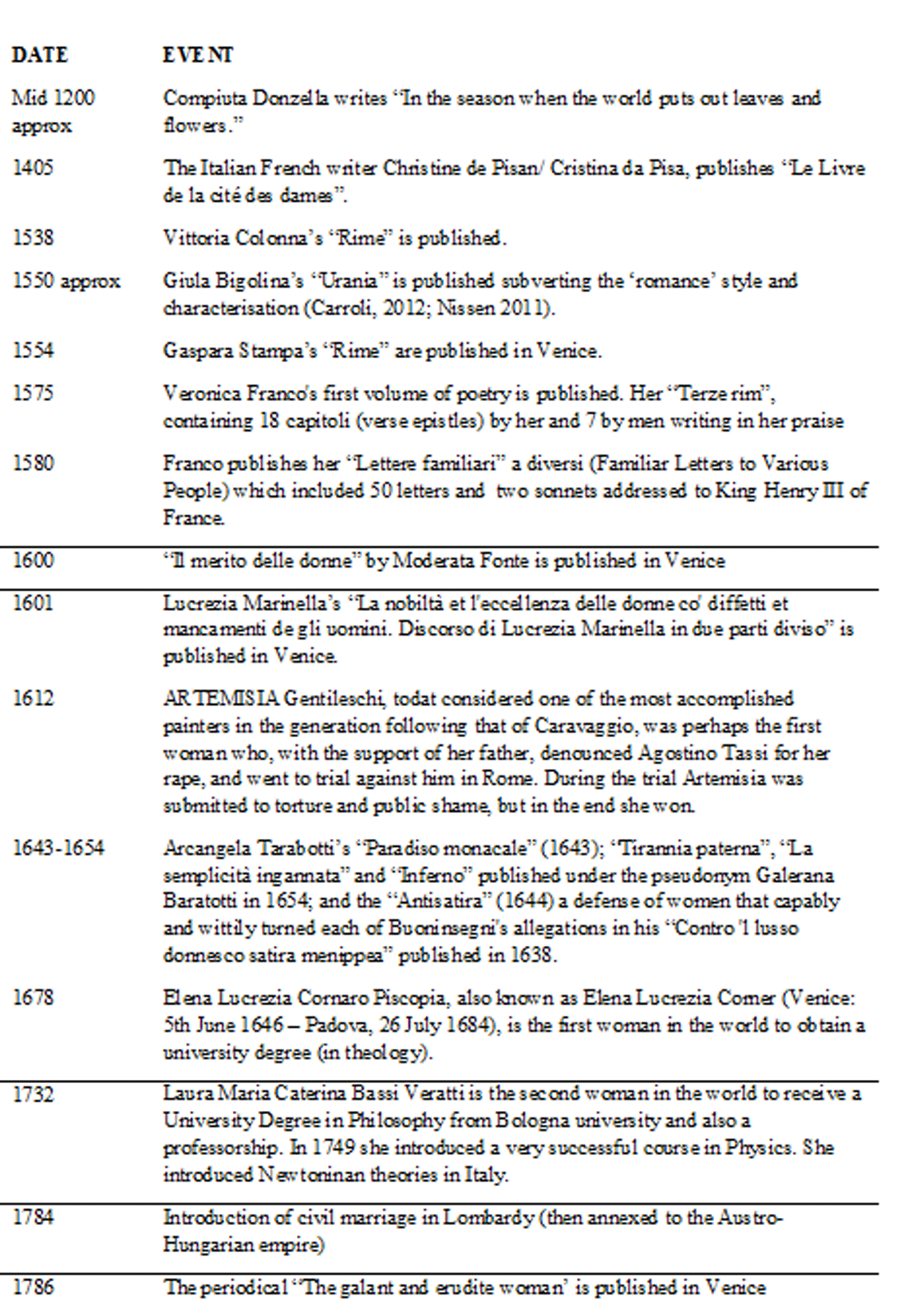
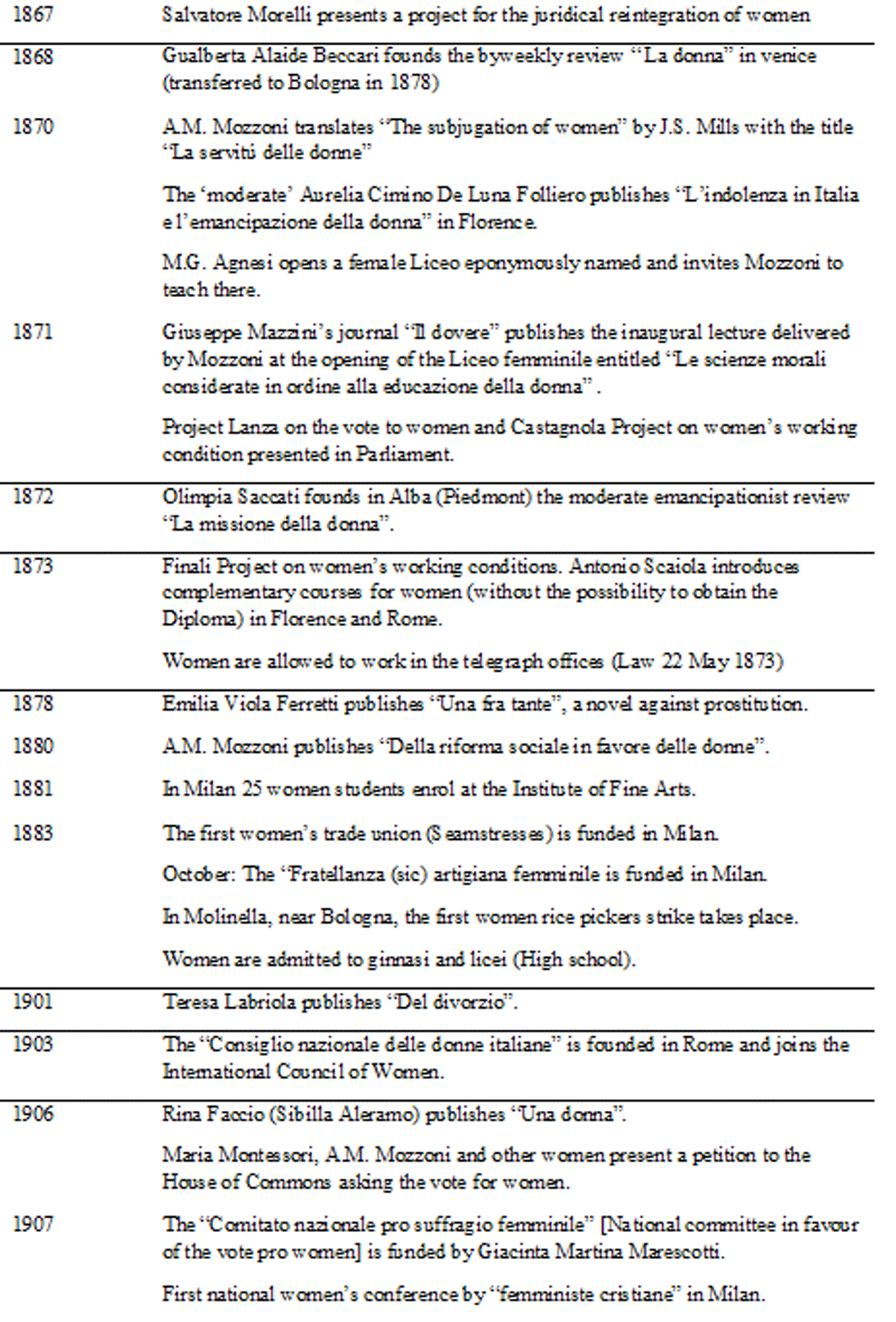
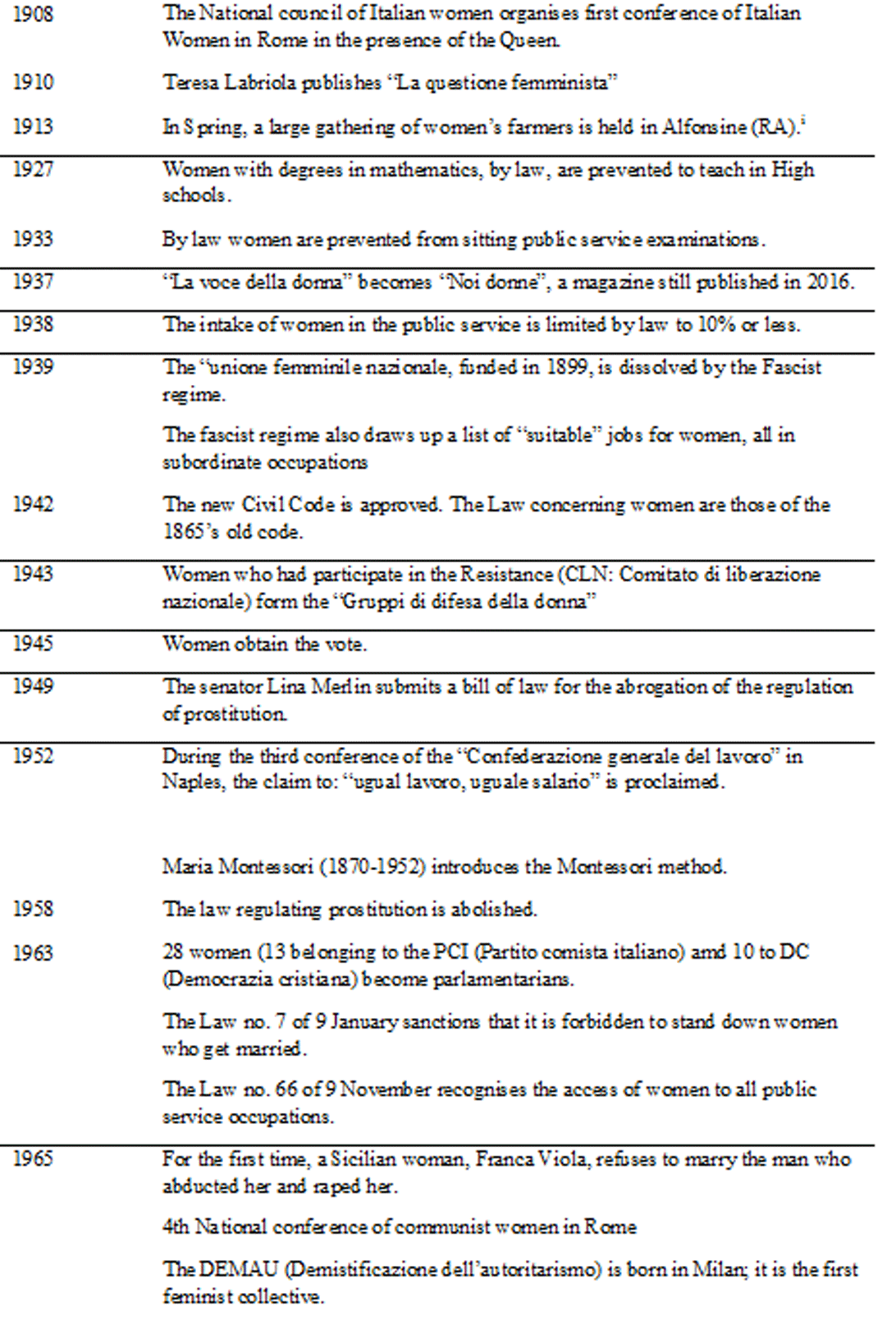
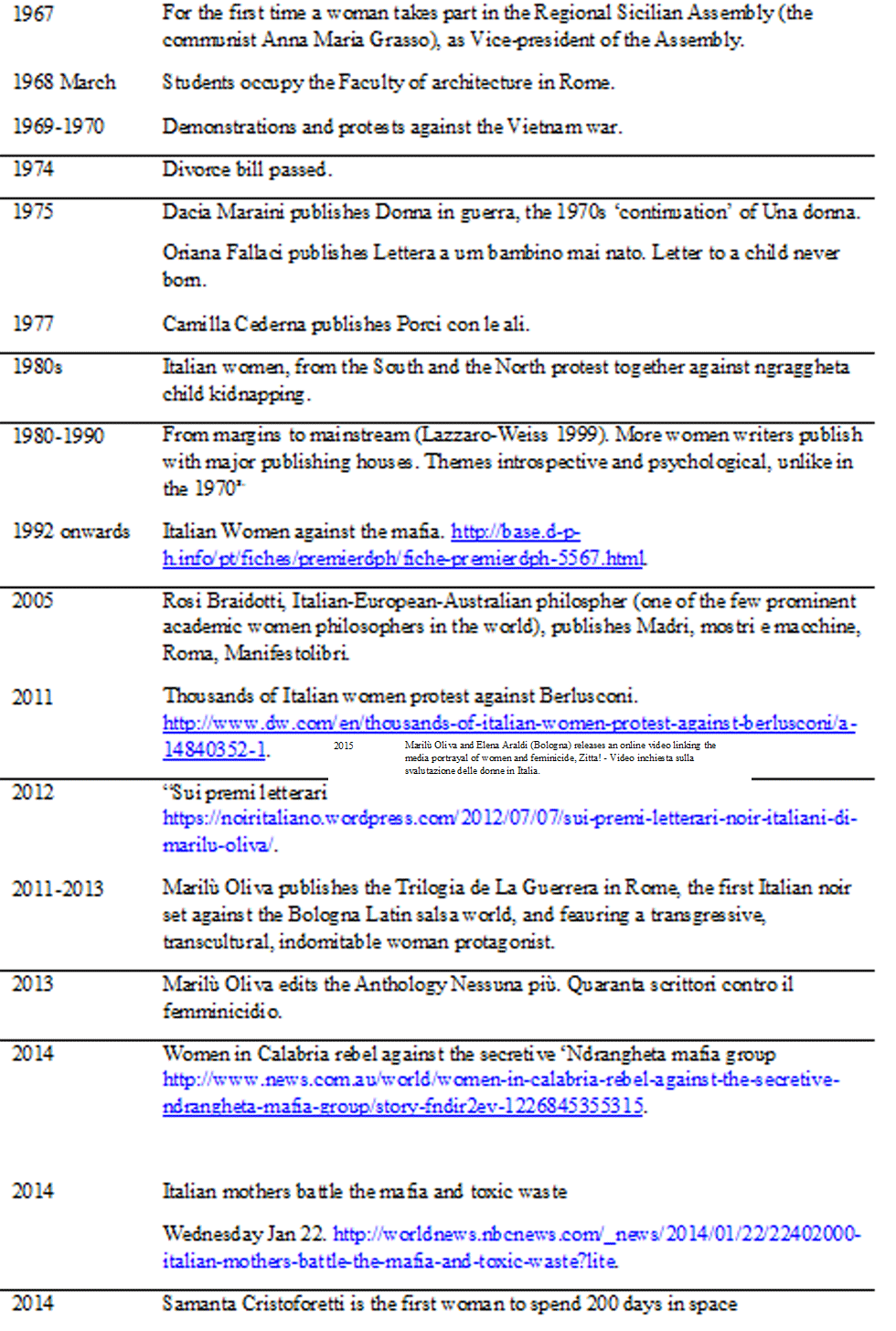

Italian women Nobel Laureate
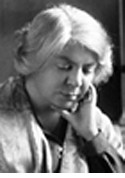

Grazia Deledda (1875-1936) continued to write extensively after she received the Nobel Prize. La casa del poeta (1930) [The Poet's House] and Sole d'estate (1933) [Summer Sun], both collections of short stories, reflect her optimistic vision of life even during the most painful years of her incurable illness. Life remains beautiful and serene, unaltered by personal suffering; man and nature are reconciled in order to overcome physical and spiritual hardship.
Rita Montalcini Levi (1909-2012). Nobel
laureate (Neurobiology). 1986: Nobel Prize in Physiology/Medicine jointly
with Stanley Cohen for the discovery of nerve growth factor (NGF). From
200, Senator for Life.
http://slowitaly.yourguidetoitaly.com/2012/03/15-women-who-changed-italy/
https://www.nobelprize.org/nobel_prizes/literature/laureates/1926/deledda-bio.html.
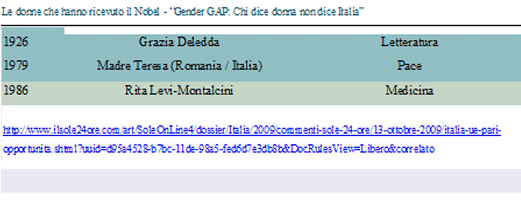
Biography
Dr Piera Carroli, https://researchers.anu.edu.au/researchers/carroli-p
Research interests and projects: 20th and 21th century 'nomad' literature: Towards a nomad literature beyond national and European borders and beyond canons (migrant, postcolonial Italian literature and literature of migration in Italy and Europe); gender, memory, belonging and citizenship in nomad writings: Postcolonial Redux: Rethinking Empire in Europe. Edited by Professor Jacqueline Lo. Manuscript submitted to Interventions. International Journal of Postcolonial Studies (U.K.: Taylor & Francis) in 2015; Italian women writers (in history and contemporary) and Italian feminism. Publications on literature, applied / linguistics, pedagogy around the world (Italy, Australia, UK, USA, Brazil, Netherlands and South Africa). In 2000 she was awarded the Vice-Chancellor's Award for Excellence in Teaching.
Notes:
[i] I take this opportunity to thank Anahita, the editor of the journal, for this special dossier on feminism and for giving me the chance to write this article. It was very difficult to choose events, themes and figures among the long history of feminism in Italy. No doubt I will have left out many important issues, women, facts, of the past and present. I welcome any comments by email on my contribution to the dossier, which perhaps I will be able to adjourn in a few years.
[ii] Over approx. 235,000 male, due mainly to the still traditional family rules and society mores, and catholic influence (see also Restelli, 2014/15).
[iii] Where I was born!
![]()
labrys,
études féministes/ estudos feministas
janeiro/ junho 2016 - janvier/juillet 2016
